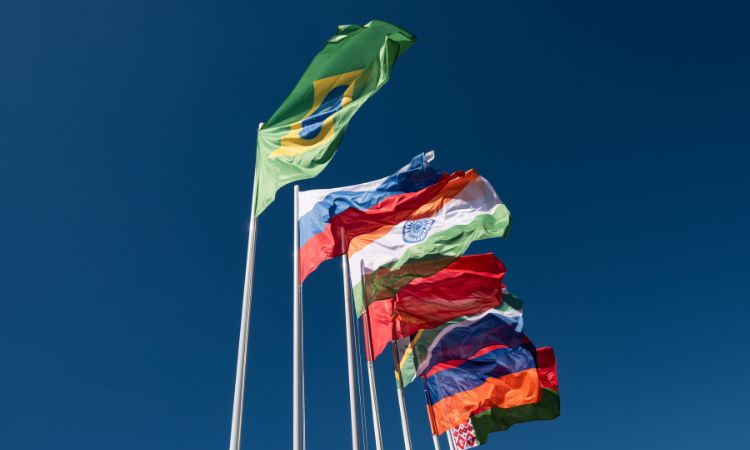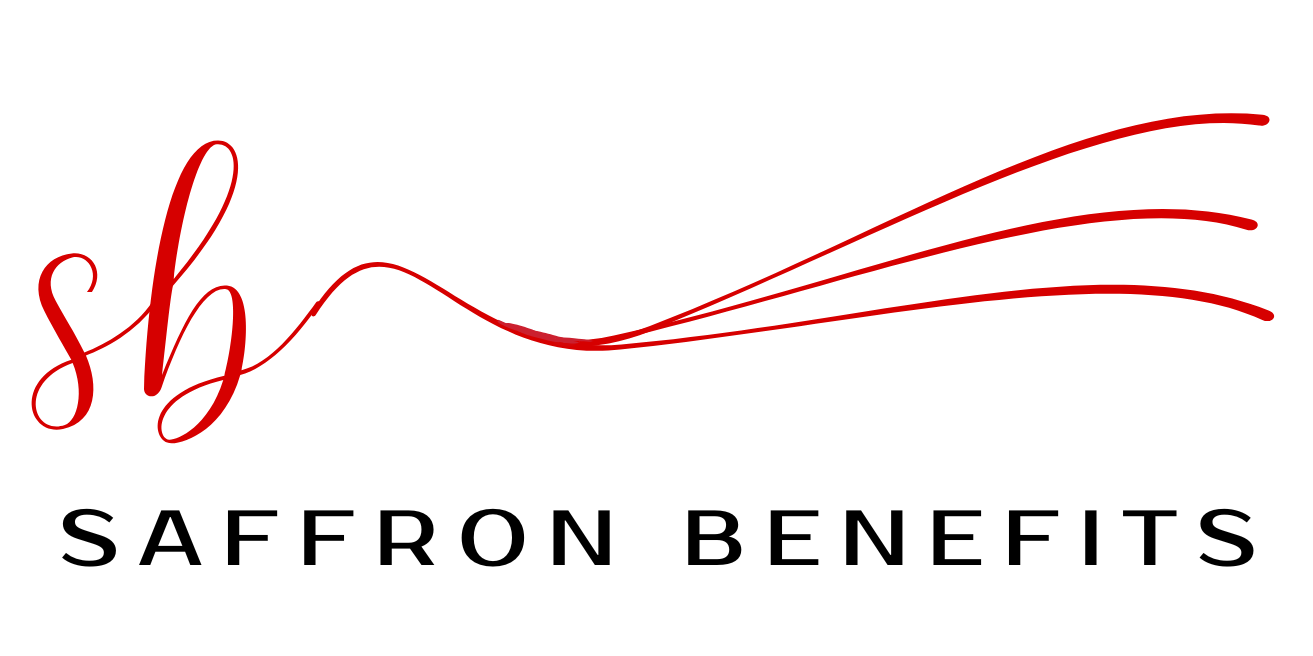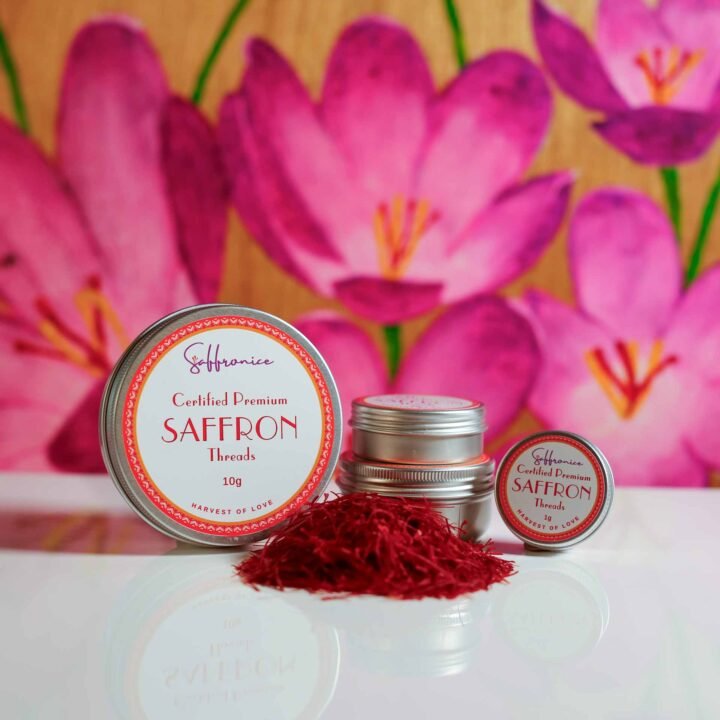📌 Quick Answer: Saffron generates over $1.5 billion in global trade annually, with Iran controlling 90% of production. This premium spice creates significant economic impact through agricultural exports, rural employment, and value-added processing, while facing challenges from price volatility and quality control issues.
Saffron, often called “red gold,” represents one of the most economically significant spices in global trade. This precious commodity has shaped international commerce for millennia, creating substantial economic opportunities while commanding premium prices that reflect its labor-intensive cultivation and limited production regions.
The global saffron economy operates as a complex network connecting ancient cultivation traditions with modern market dynamics, international trade regulations, and emerging digital technologies. Understanding these economic relationships reveals how a single agricultural product can influence rural development, international commerce, and consumer markets worldwide.
Chef’s Professional Tip: From a culinary economics perspective, saffron’s high value creates unique market dynamics – restaurants often treat it like a luxury ingredient, with menu pricing strategies that reflect both its cost and prestige value.
Key Economic Takeaways: Saffron’s Global Market Impact
- Market Value: Global saffron trade exceeds $1.5 billion annually, with 7% growth rate
- Production Concentration: Iran dominates witha 90% market share, creating supply vulnerabilities
- Price Range: Quality saffron trades between $500-5,000 per pound, depending on grade
- Rural Impact: Provides primary income for over 200,000 farming families globally
- Export Revenue: Major producing countries earn $50-400 million annually from saffron exports
- Value Addition: Processing and packaging can increase product value by 200-400%

Historical Evolution of Global Saffron Trade
The economic importance of saffron dates back over 3,000 years, when ancient civilizations recognized its value as currency, medicine, and a luxury commodity. This rich historical foundation established saffron’s position as one of the world’s first truly global trade commodities.
Ancient Trade Networks and Economic Impact
Saffron’s journey through historical trade routes created some of the world’s earliest international supply chains. The Silk Road served as the primary conduit, connecting saffron-producing regions in Persia and Kashmir with markets in Europe, China, and the Mediterranean.
Economic significance in ancient times:
- Currency substitute: Saffron served as a payment medium in many transactions
- Luxury taxation: Ancient governments imposed high taxes on saffron imports
- Trade route development: Saffron commerce helped establish major trading cities
- Cultural exchange: Economic relationships facilitated knowledge and recipe sharing
The Roman Empire imported significant quantities from Persian territories, paying prices equivalent to gold by weight. This established saffron’s reputation as a luxury commodity that would persist through centuries.
Food Scientist’s Note: The ancient economic value of saffron wasn’t just about taste – its natural preservation properties, coloring ability, and medicinal applications made it multifunctional, justifying the high prices in pre-refrigeration economies.
Development of Medieval and Renaissance Markets
During medieval times, European merchants established sophisticated trading networks centered around saffron commerce. Venice emerged as a major hub, with merchants developing quality standards and trading practices that influenced modern saffron markets.
The rise of banking systems in Renaissance Italy was partly facilitated by saffron trade profits, as merchants needed sophisticated financial instruments to manage seasonal production cycles and long-distance transportation risks.
Understanding Saffron’s Premium Market Position
Saffron maintains its position as the world’s most expensive spice due to unique economic factors that create natural barriers to mass production. These factors contribute to premium pricing structures that distinguish saffron from other agricultural commodities.
Labor Economics and Production Costs
Saffron’s economic profile is fundamentally shaped by its labor-intensive cultivation requirements:
Harvesting Economics:
- Each flower yields only 3 stigmas, weighing 0.007 grams
- Requires 150-200 flowers to produce 1 gram of dried saffron
- Harvest window lasts only 2-3 weeks annually
- Manual harvesting employs seasonal workers at premium wages
Processing and Quality Control Costs:
- Immediate post-harvest processing prevents quality deterioration
- Skilled workers are required for proper stigma separation and drying
- Quality testing equipment and certification processes add operational costs
- Packaging and storage require climate-controlled facilities
These inherent cost structures create natural price floors that maintain saffron’s premium positioning regardless of market conditions.
Market Segmentation and Value Chains
The saffron market operates across multiple segments with distinct economic characteristics:
Premium Restaurant Market (30% of volume, 50% of value):
- High-end restaurants are willing to pay premium prices
- Emphasis on origin, quality certification, and consistent supply
- Direct relationships with specialty importers and distributors
Retail Consumer Market (50% of volume, 35% of value):
- Price-sensitive consumers seeking authentic products
- Growing demand for smaller, affordable packaging options
- Increasing interest in organic and sustainably produced varieties
Industrial Applications (20% of volume, 15% of value):
- Pharmaceutical and cosmetic industries use saffron extracts
- Food processing companies are incorporating saffron in manufactured products
- Emerging markets in dietary supplements and functional foods
Major Production Regions and Economic Contributions
Global saffron production remains concentrated in specific regions where economic, climatic, and cultural factors align to support viable cultivation operations.
Iran: Economic Powerhouse of Global Production
Iran’s dominance in saffron economics stems from several competitive advantages:
Production Scale Economics:
- Annual production: 350-400 metric tons (90% of global supply)
- Cultivation area: 100,000+ hectares across northeastern provinces
- Employment generation: 180,000+ direct jobs in rural areas
- Export revenue: $300-400 million annually
Economic Infrastructure:
- Government support through subsidies and research programs
- Established processing facilities and quality control systems
- International marketing and distribution networks
- Currency advantages make Iranian saffron competitively priced
Iran’s economic model demonstrates how government policy, natural advantages, and traditional knowledge can create sustained competitive advantage in global agricultural markets.
Emerging Regional Economies
Other producing regions contribute significantly to local economies despite smaller global market shares:
Spain (Castilla-La Mancha):
- Premium positioning commands 25-40% price premiums over Iranian saffron
- Protected Designation of Origin status supports rural development
- Integration with agritourism generates additional revenue streams
- Annual economic impact: $15-20 million in the regional economy
Kashmir (India):
- Ultra-premium market positioning with prices reaching $7,000+ per kilogram
- Critical income source for 15,000+ farming families
- Government initiatives supporting quality improvement and marketing
- Export potential constrained by limited production capacity
Afghanistan:
- Rapid growth from negligible production to 20+ metric tons annually
- Alternative crop providing legitimate income in rural areas
- International development assistance supporting sector growth
- Potential annual export value: $40-60 million at full development
Economic Impact on Rural Development
Saffron cultivation creates unique economic opportunities in rural regions where alternative income sources may be limited. The economic benefits of saffron farming extend beyond individual farmers to entire regional economies.
Direct Economic Benefits
Primary Income Generation:
- Average saffron farmer income: $3,000-12,000 per hectare annually
- Seasonal employment for 50-100 workers per 100 hectares during harvest
- Women’s employment opportunities in processing and packaging
- Premium prices provide higher returns than alternative crops
Value Chain Development:
- Local processing facilities are creating manufacturing jobs
- Transportation and logistics services supporting distribution
- Packaging and labeling businesses serving export markets
- Equipment suppliers and maintenance services
Multiplier Effects in Rural Communities
Saffron’s economic impact creates secondary benefits throughout rural economies:
Local Business Development:
- Retail shops selling saffron and related products
- Restaurants and hospitality services catering to agricultural tourism
- Financial services supporting farmer credit and investment needs
- Education and training programs are developing local expertise
Infrastructure Investment:
- Road improvements facilitating transportation to markets
- Cold storage and processing facility construction
- Telecommunications infrastructure supporting international trade
- Quality testing laboratories ensuring export compliance
Food Scientist’s Note: The economic sustainability of saffron farming depends heavily on maintaining quality standards – any decline in product quality can rapidly erode the premium pricing that makes cultivation economically viable.
Current Market Dynamics and Price Mechanisms
The global saffron market exhibits unique price volatility patterns influenced by supply constraints, quality variations, and seasonal production cycles.
Price Formation and Market Mechanisms
Saffron pricing operates through complex mechanisms reflecting multiple market factors:
Supply-Side Factors:
- Weather conditions affecting annual yields (20-40% variation possible)
- Geopolitical events impacting Iranian exports and international sanctions
- Labor availability and cost fluctuations during critical harvest periods
- Competition from synthetic alternatives in some industrial applications
Demand-Side Influences:
- Growing global awareness of saffron’s culinary and health benefits
- Expanding middle-class populations in Asia are seeking premium ingredients
- Restaurant industry growth is driving professional market demand
- Emerging pharmaceutical and nutraceutical applications
Market Structure Dynamics:
- A limited number of major exporters creates oligopolistic conditions
- Information asymmetries between producers and final consumers
- Quality differentiation supporting premium pricing strategies
- Seasonal buying patterns reflecting harvest timing and storage costs
Price Volatility and Risk Management
Saffron market participants employ various strategies to manage price volatility:
Producer Strategies:
- Contract farming arrangements provide price stability
- Quality improvement investments supporting premium positioning
- Direct marketing reduces intermediary margins
- Diversification into value-added products
Trader Risk Management:
- Forward contracting with producers securing supply at known prices
- Quality testing and certification ensure authentic products
- Inventory management balancing carrying costs with market opportunities
- Geographic diversification reduces concentration risk
Current market prices typically range from $1,200-3,000 per kilogram at the wholesale level, with retail prices reaching $3,000-8,000 per kilogram for premium grades.

International Trade Regulations and Quality Systems
Global saffron trade operates within comprehensive regulatory frameworks designed to ensure product authenticity, consumer protection, and fair trade practices.
Quality Standards and Economic Impact
International quality standards create economic value through market confidence and price differentiation:
ISO 3632 Standards:
- Chemical composition requirements (crocin, picrocrocin, safranal content)
- Physical characteristics (thread length, color uniformity, foreign matter limits)
- Sensory evaluation protocols ensuring consistent quality
- Laboratory testing requirements supporting quality claims
Economic Benefits of Certification:
- Certified products command 10-25% price premiums
- Access to regulated markets requiring quality documentation
- Reduced inspection and rejection rates at the import
- Brand reputation building supporting long-term market position
Trade Facilitation and Barriers
International trade policies significantly impact saffron market economics:
Trade Facilitation Measures:
- Harmonized tariff classifications simplify customs procedures
- Mutual recognition agreements are reducing duplicate testing requirements
- Electronic documentation systems reduce transaction costs
- Trade promotion programs supporting market development
Barriers and Challenges:
- Sanctions affecting Iranian exports to certain markets
- Complex import regulations require specialized knowledge
- Anti-dumping duties are protecting domestic producers in some countries
- Counterfeit product issues are undermining market confidence
Technology and Innovation in Saffron Economics
Modern processing technologies and harvesting methods are transforming saffron economics through efficiency improvements and quality enhancements.
Processing Innovation and Value Addition
Technological advances create new economic opportunities throughout the value chain:
Harvesting Efficiency:
- Mechanical aids reduce labor requirements by 15-20%
- Improved tools and techniques increase worker productivity
- Post-harvest handling systems maintain quality during processing
- Drying technology ensures optimal moisture content and preservation
Value-Added Products:
- Saffron extracts and concentrates for industrial applications
- Standardized powder forms for food service applications
- Organic and specialty certifications commanding premium prices
- Packaging innovations extending shelf life and maintaining quality
Digital Integration:
- Online marketplaces connecting producers directly with consumers
- Traceability systems using blockchain technology ensure authenticity
- Digital marketing is reaching global customer bases
- E-commerce platforms enabling small-scale producers to access international markets
Economic Impact of Innovation
Technology adoption creates measurable economic benefits:
Cost Reduction:
- Processing efficiency improvements, reducing labor costs by 10-15%
- Quality control systems reduce rejection rates and waste
- Logistics optimization lowers transportation and storage costs
- Automated systems reduce human error and improve consistency
Revenue Enhancement:
- Premium pricing for certified organic and traceable products
- New market segments accessing previously unavailable applications
- Extended shelf-life products reduce spoilage losses
- Brand differentiation supporting market positioning strategies
Investment Opportunities and Economic Projections
The saffron industry presents unique investment opportunities across multiple segments of the value chain, from production through retail distribution.
Production Investment Potential
New Market Development:
- Emerging production regions with suitable climate conditions
- Technological improvements are making cultivation viable in new areas
- Government incentive programs supporting agricultural diversification
- Climate change is potentially expanding suitable growing regions
Processing and Value Addition:
- Modern processing facilities are improving quality and efficiency
- Packaging and branding operations capturing retail margins
- Extraction and concentration technologies serving industrial markets
- Organic certification systems accessing premium market segments
Risk Assessment and Returns
Investment in saffron operations requires careful analysis of unique risk factors:
Production Risks:
- Climate variability affects annual yields (coefficient of variation: 25-35%)
- Labor availability during critical harvest periods
- Plant diseases and pests can be devastating to crops
- Long-term soil health and sustainability considerations
Market Risks:
- Price volatility creates revenue uncertainty
- Competition from synthetic alternatives in some applications
- Regulatory changes affecting international trade
- Quality control failures damage an amazing brand reputation
Expected Returns:
- Well-managed saffron operations generate 15-25% annual returns
- Processing and trading operations typically achieve 8-15% margins
- Premium positioning strategies can achieve 20-30% gross margins
- Brand development and marketing investments show 3-5 year payback periods
Sustainability and Future Economic Prospects
Sustainable saffron farming practices increasingly influence economic viability as consumers and regulations emphasize environmental responsibility.
Environmental Economics
Sustainable practices create long-term economic value:
Water Conservation:
- Drip irrigation systems reduce water consumption by 30-40%
- Drought-resistant cultivation techniques maintain yields during dry periods
- Water recycling systems are lowering operational costs
- Government incentives supporting water-efficient technologies
Soil Health Management:
- Organic farming methods eliminate chemical input costs
- Crop rotation systems maintain soil fertility naturally
- Composting and natural fertilizers reduce external input costs
- Long-term soil health ensures sustained productivity
Economic Sustainability Framework
Future economic success depends on balancing multiple sustainability factors:
Social Sustainability:
- Fair trade practices ensure equitable income distribution
- Community development programs supporting rural prosperity
- Knowledge transfer systems preserving traditional cultivation methods
- Gender equality initiatives expanding economic participation
Environmental Sustainability:
- Carbon footprint reduction through efficient production methods
- Biodiversity conservation maintains ecosystem health
- Waste reduction and circular economy principles
- Renewable energy adoption in processing and storage
Economic Sustainability:
- Price stabilization mechanisms reducing market volatility
- Quality improvement programs maintain a competitive advantage
- Market diversification reduces concentration risks
- Innovation investments ensuring long-term competitiveness
Future Market Outlook and Economic Projections
The global saffron economy shows strong growth potential driven by expanding applications, geographic diversification, and increasing quality awareness.
Market Growth Projections
Demand Growth Factors:
- Rising global incomes are increasing luxury spice consumption
- Growing awareness of saffron’s health benefits is expanding market reach
- Restaurant industry growth is driving professional market demand
- Pharmaceutical and nutraceutical applications are creating new demand streams
Supply Response Capabilities:
- New production regions entering commercial cultivation
- Productivity improvements through technology adoption
- Quality enhancement programs supporting premium positioning
- Investment in processing infrastructure to expand capacity
Strategic Economic Opportunities
Market Development:
- Untapped consumer markets in the Asia-Pacific and Africa
- Industrial applications in pharmaceuticals and cosmetics
- The functional food segment is growing at 8-12% annually
- E-commerce platforms enabling direct producer-consumer relationships
Value Chain Optimization:
- Integrated production-processing-marketing operations
- Cooperative structures improve farmers’ bargaining power
- Brand development and consumer education initiatives
- Supply chain transparency is building consumer trust
The economic future of saffron appears robust, with market fundamentals supporting continued growth and value creation across the entire industry value chain.
Key Economic Takeaways
Understanding saffron’s role in global economies reveals both opportunities and responsibilities for industry participants:
🔑 Critical Success Factors:
- Quality Focus: Maintaining premium quality standards ensures sustained economic viability
- Market Diversification: Reducing dependence on single markets or applications minimizes risks
- Sustainable Practices: Environmental and social responsibility support long-term competitiveness
- Technology Adoption: Innovation drives efficiency and creates new market opportunities
- Collaborative Approach: Industry cooperation strengthens market position and consumer confidence
The saffron economy demonstrates how traditional agricultural products can thrive in modern global markets through quality differentiation, sustainable practices, and strategic market development. Success requires understanding both historical foundations and future trends shaping this unique and valuable industry.
Frequently Asked Questions
What is the current global market value of saffron? The global saffron market is valued at approximately $1.5 billion annually, with projected growth of 7% per year driven by expanding culinary applications and increasing awareness of health benefits.
Why is saffron so expensive compared to other spices? Saffron’s high price reflects its labor-intensive cultivation requiring hand-harvesting of individual flower stigmas, limited growing regions with suitable climate conditions, and the fact that 150-200 flowers produce only 1 gram of dried saffron.
Which countries benefit most economically from saffron production? Iran generates $300-400 million annually from saffron exports and dominates global production. Spain, Kashmir (India), Afghanistan, and Mediterranean countries also derive significant economic benefits from regional saffron industries.
How does saffron cultivation impact rural communities economically? Saffron provides primary income for over 200,000 farming families globally, creates seasonal employment opportunities, and generates secondary economic benefits through processing, packaging, and support services in rural areas.
What are the main economic risks in the saffron industry? Key risks include weather-related production variability (20-40% annual variation), price volatility due to concentrated supply sources, quality control challenges, and competition from synthetic alternatives in some applications.
How do international trade regulations affect saffron economics? Quality standards and trade regulations create market access requirements that can add costs but also enable premium pricing for certified products. Sanctions and import restrictions can significantly impact trade flows and pricing.



